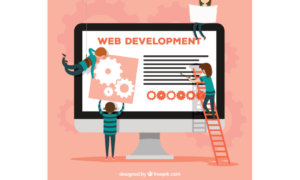With the launch of Google’s AMP project, the debate over web page load times seems to have entered a whole new territory. It seems like everyone is in a frenzy to optimize their website and reduce page load time.
But why should he care?
Because page load time determines whether your website visitors continue to research or leave it. In fact, more than 83% of visitors expect a web page to load in 3 seconds or less, and more than 40% of visitors will leave a web page if it takes more than 3 seconds to load.
Why Does Page Load Time Matter?
The loading speed of a web page is an important factor in the usability of website development. Google considers page speed as one of the 200 ranking factors that affect a website’s position in organic search results and definitely contribute to user experience. With many other websites in your niche, the competition for getting website traffic and impressing people with the overall user experience is becoming more important every day. If your website doesn’t load quickly, you are likely to lose website visitors to your competitors in seconds.
Fast page load times can also increase the crawling speed of your site. The faster a page can load, the more pages Google can crawl simultaneously. High page speeds can also improve your site’s crawl demand, which means Google wants to crawl more pages.
How to Improve Your Page Load Time
Here are 5 quick tips aimed at optimizing your website’s loading time:
1. Optimize Image Size and Format
Images on your website can consume a lot of bandwidth, which affects your page load time. Resizing images on your website in HTML is not enough, as it only changes the appearance of the image, not its actual size. Use an external image editing tool to resize the image like Photoshop and set it to 72 dpi.
For optimized page load times, it is ideal to stick to standard image formats such as JPG, PNG, and GIF.
2. Optimize Website Caching
When a visitor loads a website, your webpage image files, CSS, and Java files are also loaded, which takes a long time to load the page. If caching is set correctly, your browser can save these resources or files for future requests. When loading multiple pages, these files can be fetched from the cache instead of being downloaded again from the network. It also reduces bandwidth and hosting costs.
3. Avoid Inline JS and CSS files
It is a good practice to put your website’s JS and CSS in external files. When the page loads, the browser saves these files externally, reducing the page load time on subsequent requests. Also, using JS and CSS files externally allows for easier website maintenance.
4. Reduce HTTP Requests
Use CSS sprites to reduce the number of image requests. Merge background images into a single image using background image CSS elements and background-position. Merge images inline in cached stylesheets. Likewise, combine all your javascript files into one file as well as all your CSS files.
5. Reduce Cookie Size
Cookies are used to store data that needs to be stored between requests. This data is sent with each request and increases load time if large. Therefore, by reducing the size of cookies, you reduce the amount of data transferred and reduce page load times. Delete unnecessary cookies or reduce cookie size.
Conclusion
Website speed is a metric that should not be overlooked if you are concerned about providing an optimal user experience. You now need to create a baseline and then refer to your base brand to make sure it keeps improving. Moreover, you can also hire Visual Marketing Australia. A Digital Marketing Agency specializing in all your Online Marketing needs including Branding & Graphic Design, and Website Development.


































